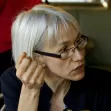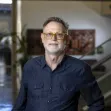The Daily Source of Urban Planning News
How Building Codes Saved Chile
Chile's 8.5 earthquake resulted in a significantly lower death toll than the recent quake in Haiti. Partly it was the location of the epicenter, but strict building codes played a part as well.
Mayor Bing Says It's Time to Downsize Detroit
"If we don't do it, you know this whole city is going to go down," said the Mayor. A new study by the mayor's staff shows that roughly one in three parcels are vacant lots or abandoned homes.
New TODs Face Competition, Parking Issues
Recent transit-oriented developments in Maryland have mixed success. Demographics are on their side, but lack of parking and fierce competition make retail a significant challenge.
In Land Of Hi-Tech, Why Do Newspapers Flourish?
Palo Alto is where Silicon Valley started, yet locals eagerly pick up the Daily Post, the Daily News, as well as read PaloAlto-Online. The New York Times investigates why print media flourishes here while regional and national papers struggle.
Arrest Made as L.A. Cracks Down on Illegal Billboards
In an unprecedented move, L.A. City Attorney Carmen Trutanich has placed a business owner under arrest for posting an illegal "supergraphic" billboard.
From Motor City to Mode D'Art City?
Between official encouragement, revived art institutes and "guerrilla" artists, Detroit is becoming a magnet for artists as it seeks creative ways to revitalize.
A New/Old Neighborhood in Cairo
A group of development agencies came together to undertake a historic-preservation and community-development effort in Cairo's Al-Darb al-Ahmar community. The project was such a success that they're still working, by invitation, restoring the area.
Can States Afford High-Speed Rail?
Federal money is making high-speed rail possible, but state governments are unsure if they can afford to maintain and operate the systems once they are in place.
A Successful "Blue-Green Alliance" At Port Of LA
The single largest source of air pollution in Southern California are the Ports of LA and Long Beach. Environmentalists, environmental justice advocates, and Teamsters are working together to replace offending diesel drayage trucks.
A Breakthrough in Desalinization?
Desalinization is a costly process because of the massive electricity needed to make it work. A Canadian startup believes it can cut that cost by 80% with a thermo-ionic process.
Ghosts Good for Business
A number of hotels across the country have found that having a resident ghost is good for the bottom line, attracting tourists and thrillseekers.
Urban Wind Power
A small manufacturer of wind turbines in Colorado Springs, Colorado is ramping up to become the city's first renewable-energy company, specializing in small wind systems for urban homes.
As Flames Dies, Olympic Costs Pile Up for Vancouver
The Olympics have ended in Vancouver, but their costs live on.
Designing Cities for Food
Nicola Twilley and Sarah Rich are launching a project called Foodprint NYC with the goal of creating a comprehensive vision for a food policy for New York. Urban Omnibus has this interview.
Regional Land Use Plan Approved in Metro Portland
Much of the land use plan is focused on what will not be used -- areas set aside as urban preserves.
Breathing Life Back into Seattle's Alleys
The City of Seattle is looking to revive some of its often forgotten and neglected urban spaces: alleys.
Gentrification Without Exodus in Bedford-Stuyvesant
The Brooklyn neighborhood of Bedford-Stuyvesant is coming up in the world but is managing to preserve its African-American culture throughout.
88% of Americans Support High-Speed Rail
A new survey conducted by HNTB Corporation says that nearly nine in ten Americans are currently open to high-speed rail travel for long-distance travel within the United States.
America's Path to 400 Million
<em>The New York Times</em> reviews a new book by Joel Kotkin about the role of immigration and minority populations in America.
Earthquakes Threaten Many Third-World Cities
Port-au-Prince is not an outlier. Many other major cities in developing and poor countries lie along earthquake fault lines and are in danger of destruction.
Pagination
Caltrans
City of Fort Worth
Mpact (founded as Rail~Volution)
City of Camden Redevelopment Agency
City of Astoria
City of Portland
City of Laramie
Urban Design for Planners 1: Software Tools
This six-course series explores essential urban design concepts using open source software and equips planners with the tools they need to participate fully in the urban design process.
Planning for Universal Design
Learn the tools for implementing Universal Design in planning regulations.


































